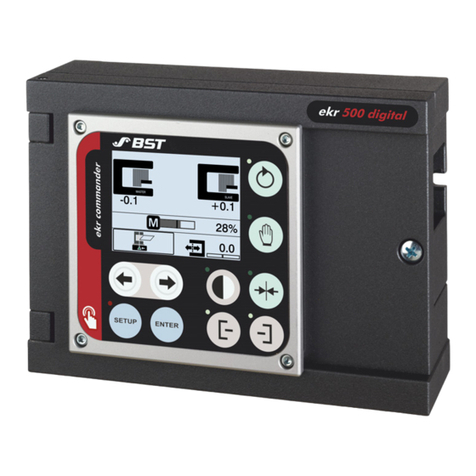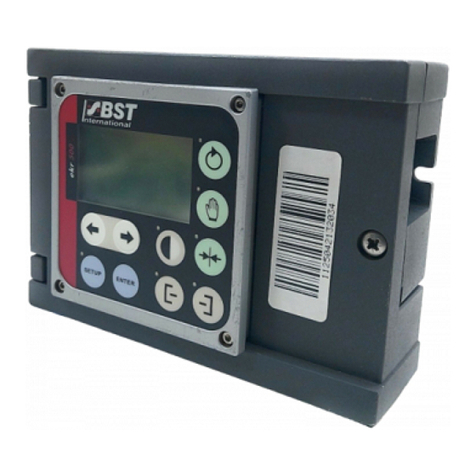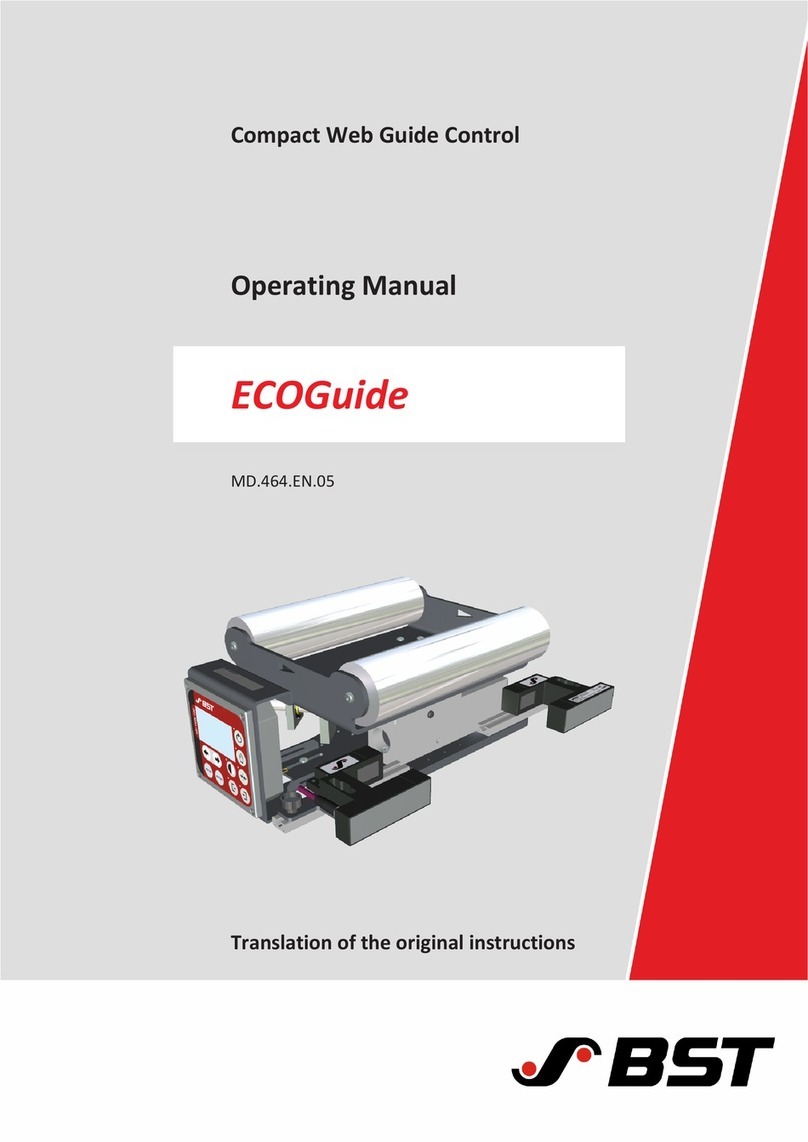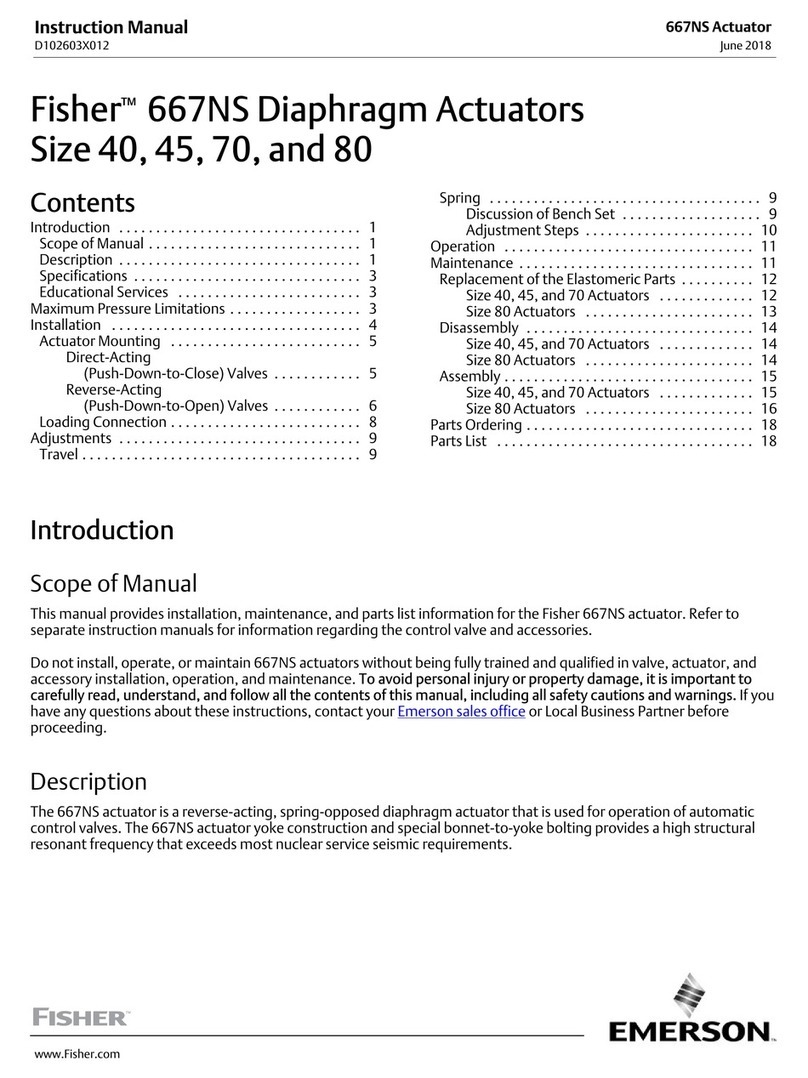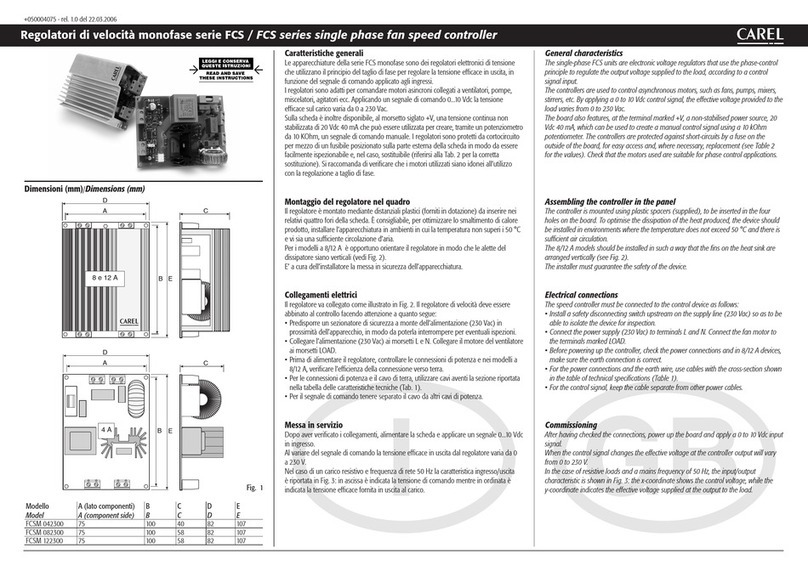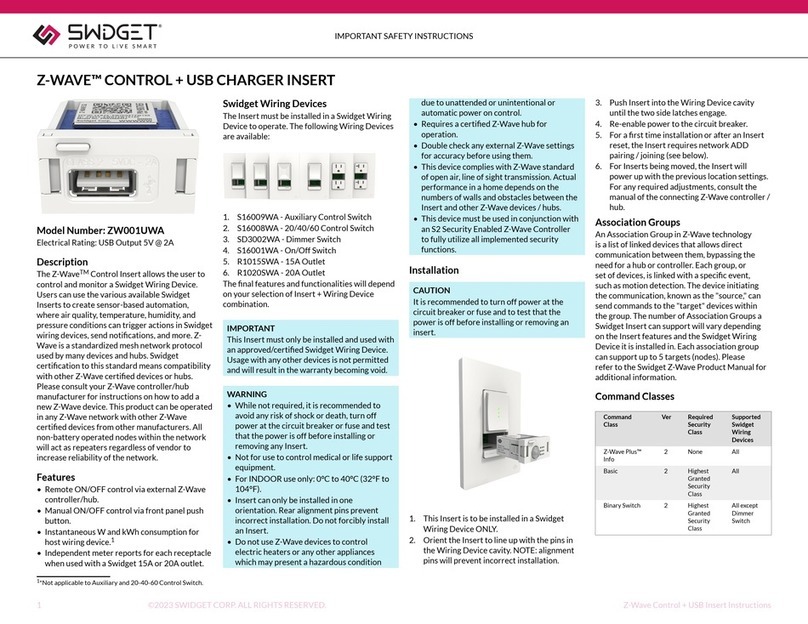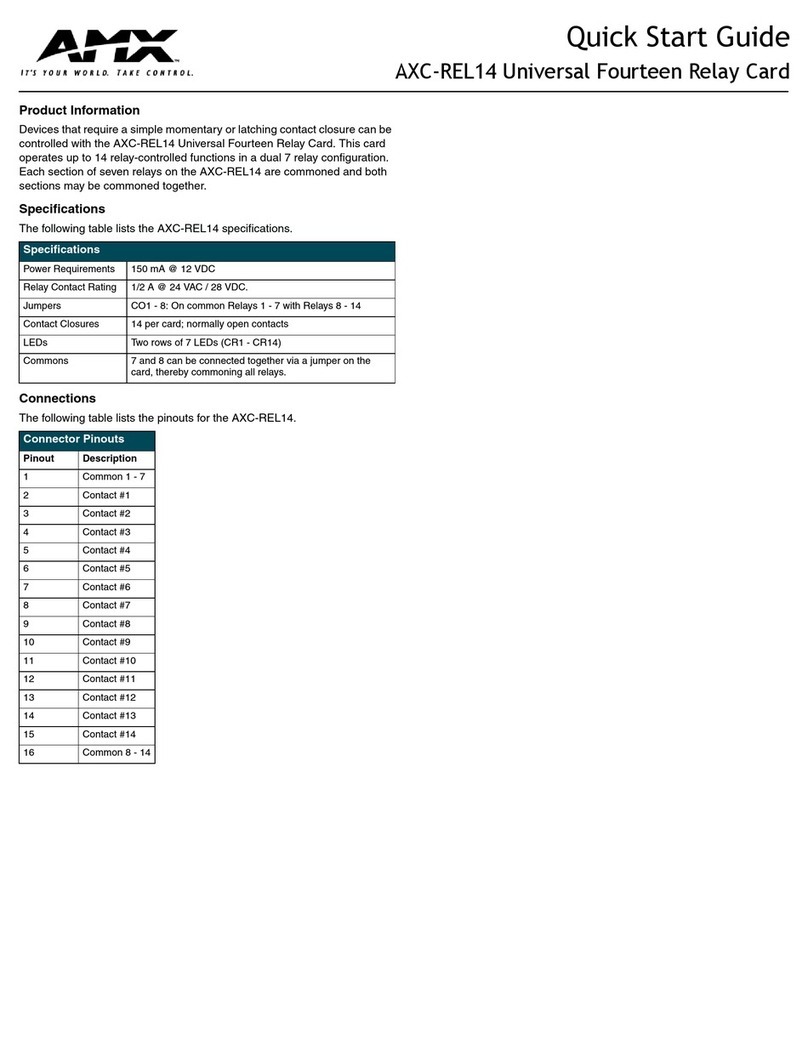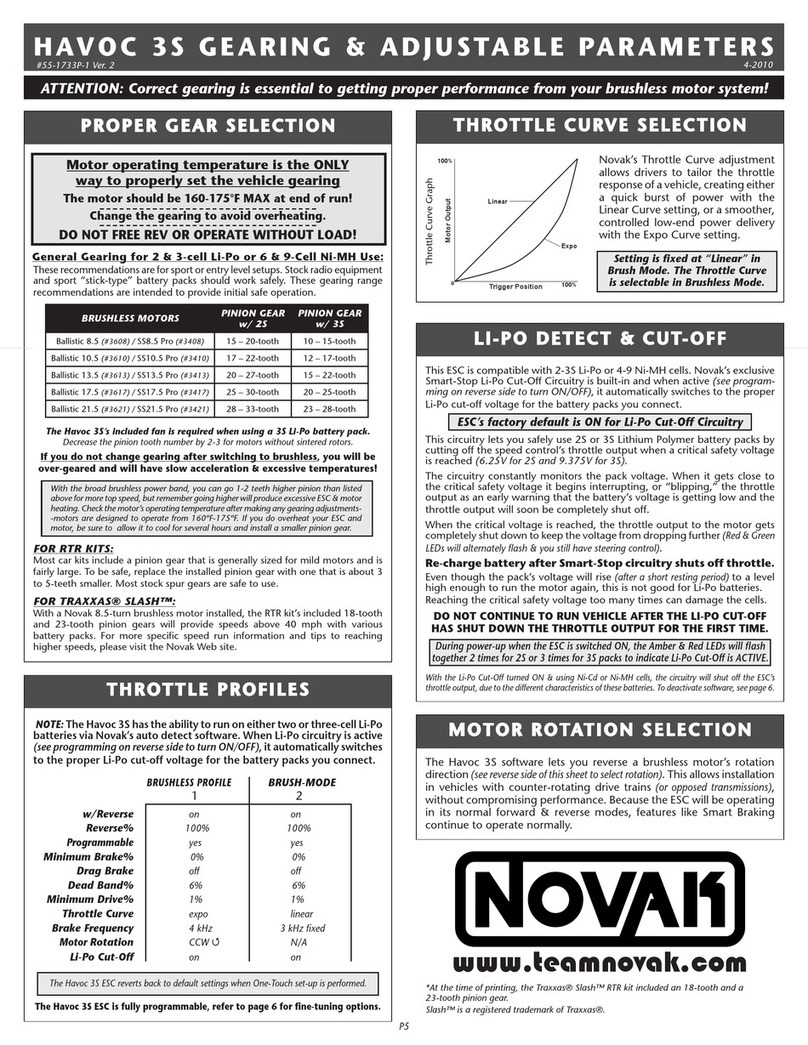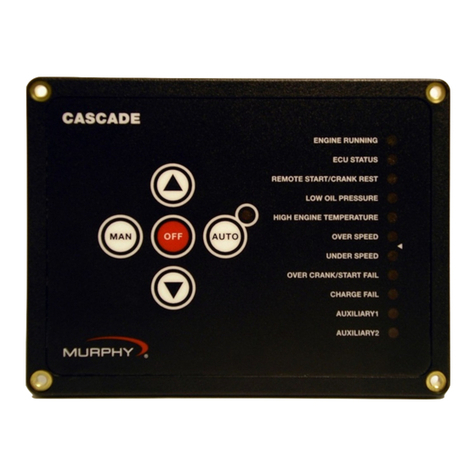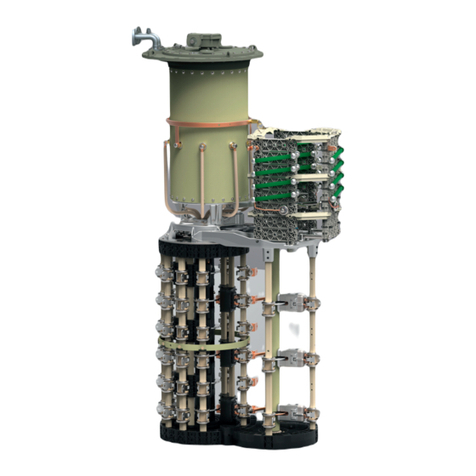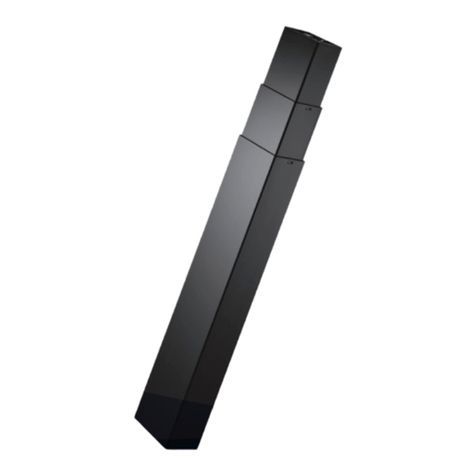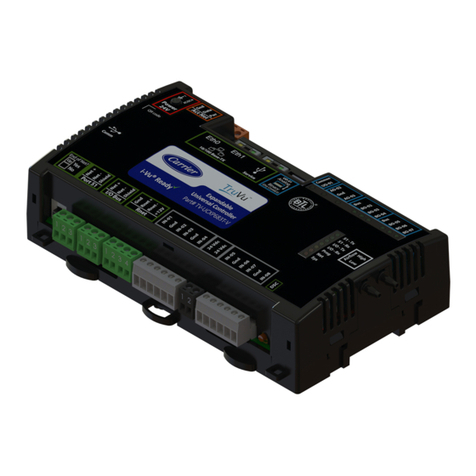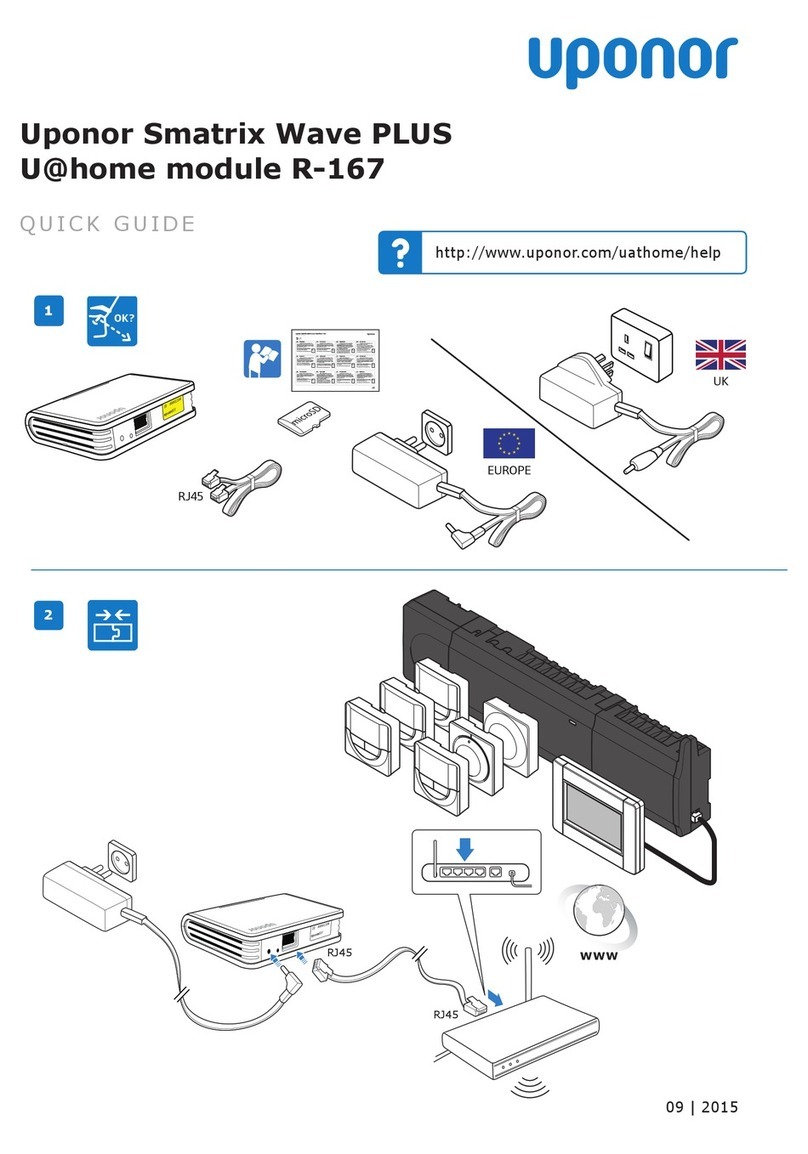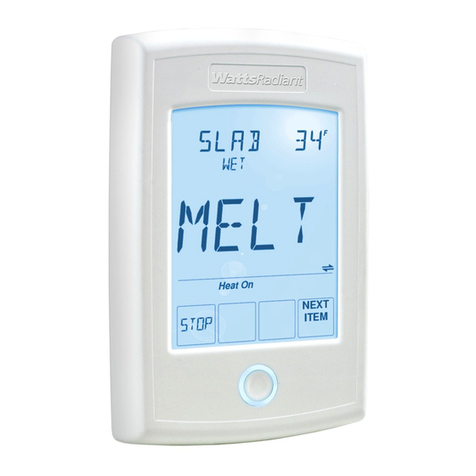BST ekr CON 100 User manual

Web Guiding System
Installation and
Operating Manual
ekr CON 100
MD.461.EN.06
Translation of the Original Manual

BST GmbH
Remusweg 1
D-33729 Bielefeld
Tel.: +49 (0) 521 400 70 0
Fax: +49 (0) 5206 999 999
E-Mail: [email protected]
Internet: www.bst.group
This documentation is protected by copyright. The translation as well as reproduction and distribution in any form is forbidden without the approval
of the rights holder and will be pursued under civil and criminal law. Technical modifications reserved.

Table of Contents
ekr CON 100 – Installation and Operating Manual iii
Table of Contents
1 About This Document........................................................................................ 7
1.1 What You Need to Know............................................................................................... 7
1.2 Target Group................................................................................................................. 7
1.3 Storage and Distribution............................................................................................... 7
1.4 Meanings of the Safety Instructions and Symbols........................................................ 7
1.4.1 Safety Instructions ........................................................................................................ 7
1.4.2 Symbols......................................................................................................................... 8
1.4.3 Operation Using Keys.................................................................................................... 8
1.5 More Detailed Information........................................................................................... 8
2 About Safety ..................................................................................................... 9
2.1 Intended Use................................................................................................................. 9
2.2 Non-intended Use......................................................................................................... 9
2.2.1 Non-intended Infringement of Guidelines.................................................................. 10
2.2.2 Non-intended Operation............................................................................................. 10
2.2.3 Non-intended Modification of Electronic Data........................................................... 10
2.3 Safety Instructions ...................................................................................................... 11
2.3.1 General Safety Instructions......................................................................................... 11
2.4 Qualification of the Personnel .................................................................................... 13
2.5 Duties of the Operating Company and Personnel ...................................................... 14
2.5.1 Duties of the Operating Company .............................................................................. 14
2.5.2 Duties of the Personnel............................................................................................... 15
2.6 Conduct in the Event of Danger and Accidents .......................................................... 15
2.7 Personal Protective Equipment .................................................................................. 16
2.8 Guarantee and Liability............................................................................................... 16
2.8.1 Disclaimer ................................................................................................................... 16
2.8.2 Exceptions to the Disclaimer....................................................................................... 17
2.8.3 License and Liability for Software Supplied ................................................................ 17
3 Design and Function.........................................................................................18
3.1 Design ......................................................................................................................... 18
3.2 Function ...................................................................................................................... 19
3.3 Guiding Modes............................................................................................................ 19
3.4 Control and Display Elements..................................................................................... 20
3.4.1 Graphic Display ........................................................................................................... 20
3.4.2 Keys............................................................................................................................. 20
3.5 Message Output “System OK“ .................................................................................... 21
3.6 Connectable Components........................................................................................... 22
3.7 Designation of the Sensors ......................................................................................... 23
3.7.1 Edge Sensors (Sensor1/2) .......................................................................................... 23
3.7.2 Line and Contrast Sensor (Sensor3) ........................................................................... 24
3.8 Accessories.................................................................................................................. 24
3.9 Name plate.................................................................................................................. 25
4 Technical Specifications ...................................................................................26
4.1 Controller.................................................................................................................... 26
4.1.1 Ambient Conditions .................................................................................................... 26
4.1.2 Protection Category.................................................................................................... 26
4.1.3 Power Supply .............................................................................................................. 26
4.1.4 Analogue Inputs.......................................................................................................... 27
4.1.5 Digital Inputs............................................................................................................... 27
4.1.6 Output Motor Output Stage ....................................................................................... 27
4.1.7 Message Output "System OK" .................................................................................... 28
4.1.8 Interfaces .................................................................................................................... 28
4.1.9 Display......................................................................................................................... 29
4.1.10 Weight and Dimensions.............................................................................................. 29
4.2 Power Pack.................................................................................................................. 30

Table of Contents
iv ekr CON 100 – Installation and Operating Manual
4.3 Sensors........................................................................................................................ 31
4.3.1 Edge Sensors............................................................................................................... 31
4.3.2 Line and Contrast Sensor CLS Pro 600 ........................................................................ 33
4.4 Electric Motor Powered Actuators.............................................................................. 34
4.5 Emissions..................................................................................................................... 35
4.6 RoHS Conformity......................................................................................................... 35
5 Transport, Delivery and Storage .......................................................................36
5.1 Transport..................................................................................................................... 36
5.2 Scope of Delivery ........................................................................................................ 37
5.3 Unpacking the Delivery............................................................................................... 37
5.4 Storage........................................................................................................................ 37
6 Installation.......................................................................................................38
6.1 Safety Instructions ...................................................................................................... 38
6.2 Selecting the Installation Location.............................................................................. 39
6.3 Installing the Controller .............................................................................................. 40
6.3.1 Installation Cut-Out..................................................................................................... 40
6.3.2 Space Requirement for the Connecting Cable............................................................ 40
6.3.3 Installing the controller............................................................................................... 41
7 Electrical Connection........................................................................................42
7.1 Safety Instructions ...................................................................................................... 42
7.2 Cable Routing.............................................................................................................. 43
7.3 Connecting the Cables ................................................................................................ 44
7.4 Ensuring Equipotential Bonding.................................................................................. 45
7.5 Connections on the Controller.................................................................................... 46
7.6 Sockets / Plugs ............................................................................................................ 47
7.6.1 Overview..................................................................................................................... 47
7.6.2 X100 - Power Supply ................................................................................................... 48
7.6.3 X101, X102 - CAN-Bus ................................................................................................. 49
7.6.4 X103 - Actuator ........................................................................................................... 50
7.6.5 X104 - Network ........................................................................................................... 51
7.6.6 X105 - Service.............................................................................................................. 52
7.7 Terminal Strips............................................................................................................ 53
7.7.1 Overview..................................................................................................................... 53
7.7.2 X1 - Digital inputs........................................................................................................ 54
7.7.3 X2 - Position feedback actuator.................................................................................. 55
7.7.4 X3 - Servo center transducer ...................................................................................... 56
7.7.5 X4 - Brushless motor / DC ........................................................................................... 57
7.7.6 X5 - Message output "System OK".............................................................................. 58
7.8 Service Indications ...................................................................................................... 59
7.8.1 Service LEDs Overview ................................................................................................ 59
7.8.2 Display of Device Status.............................................................................................. 59
7.8.3 Display of Bus Status................................................................................................... 59
7.8.4 Status Display of Power Supply................................................................................... 60
7.8.5 Status Display of Message Output "System OK"......................................................... 60
8 Commissioning.................................................................................................61
8.1 Safety Instructions ...................................................................................................... 61
8.2 Requirements.............................................................................................................. 62
8.3 Setting the DIL Switches.............................................................................................. 62
8.3.1 Using the DIL Switch ................................................................................................... 63
8.3.2 Setting the DIL Switches.............................................................................................. 64
8.4 Setting the Motor Rotation Direction ......................................................................... 65
8.5 Commissioning the Actuator Without Position Feedback .......................................... 66
8.5.1 Set the Guiding Direction for Center Positioning........................................................ 66
8.5.2 Setting the Gain of the Servo Center Transducer ....................................................... 67
8.6 Commissioning the Actuator With Position Feedback................................................ 68
8.6.1 Set the Guiding Direction for Center Positioning........................................................ 68

Table of Contents
ekr CON 100 – Installation and Operating Manual v
8.6.2 Setting Stroke Limitation and Servo-Center Position.................................................. 69
8.7 Performing the Material Setup ................................................................................... 72
8.8 Adjusting the Controller Gain ..................................................................................... 72
9 Operation ........................................................................................................74
9.1 Safety Instructions ...................................................................................................... 74
9.2 Control Panel .............................................................................................................. 74
9.3 Operation Display ....................................................................................................... 76
9.3.1 Overview..................................................................................................................... 76
9.3.2 Operation Display Edge Sensors (Sensor 1/2)............................................................. 77
9.3.3 Operation Display Line and Contrast Sensor (Sensor 3) ............................................. 78
9.3.4 Actuator Operation Display ........................................................................................ 80
9.4 Special Displays........................................................................................................... 81
9.4.1 Limit Switch Active...................................................................................................... 81
9.4.2 Actuator Blocked (Motor Overcurrent) ...................................................................... 81
9.4.3 Impermissible Supply Voltage..................................................................................... 82
9.4.4 Motor Control Timeout............................................................................................... 82
9.4.5 Controller Interlock Active.......................................................................................... 83
9.4.6 Actuator Bus Connection Fault ................................................................................... 83
9.4.7 Loss of the Line / Contrast Transition ......................................................................... 84
9.4.8 External Motor Output Stage Fault (Drive Module 160)............................................. 84
9.5 Performing the Material Setup ................................................................................... 85
9.5.1 Overview..................................................................................................................... 85
9.5.2 Activating the Material Setup ..................................................................................... 87
9.5.3 Cancelling Material Setup ........................................................................................... 87
9.5.4 Procedure for Web Edge Guiding ............................................................................... 88
9.5.5 Procedure for Web Center-Line Guiding..................................................................... 90
9.6 Selecting the Operating Mode for the IR 2011/40 Edge Sensor ................................. 93
9.6.1 Function ...................................................................................................................... 93
9.6.2 Requirements.............................................................................................................. 93
9.6.3 IR 2011/40 Operating Modes...................................................................................... 93
9.6.4 Operating Mode Selection.......................................................................................... 95
9.7 Selecting the Guiding Mode........................................................................................ 96
9.8 Selecting the Operating Mode.................................................................................... 97
9.8.1 Manual Mode ............................................................................................................. 97
9.8.2 Automatic ................................................................................................................... 97
9.8.3 Center Positioning....................................................................................................... 98
9.8.4 Watchdog.................................................................................................................... 99
9.9 Setting the Guiding Setpoint..................................................................................... 102
9.10 Optimizing the Controller Gain ................................................................................. 104
9.11 Calling up the Setup Menu........................................................................................ 106
9.12 Displaying System Information ................................................................................. 108
9.13 Displaying System Components................................................................................ 109
9.14 Displaying the DIL Switch Settings ............................................................................ 110
9.15 Displaying the Status of the Digital Inputs................................................................ 112
9.16 Displaying the CAN-Bus Status.................................................................................. 113
9.17 Restoring Factory Default Settings............................................................................ 114
10 Remote Control (Digital Inputs)......................................................................115
10.1 Safety Information .................................................................................................... 115
10.2 Digital Inputs............................................................................................................. 115
10.3 Truth Table................................................................................................................ 116
11 Maintenance and Cleaning.............................................................................117
11.1 Safety Instructions .................................................................................................... 117
11.2 Maintenance Table ................................................................................................... 118
11.3 Maintenance and Cleaning work .............................................................................. 118
11.3.1 Cleaning the Controller Housing ............................................................................... 118
11.3.2 Cleaning the Edge Sensor Housing............................................................................ 118

Table of Contents
vi ekr CON 100 – Installation and Operating Manual
11.3.3 Cleaning the Housing of the CLS Pro 600 Line and Contrast Sensor......................... 119
11.3.4 Cleaning the Electric Motor Powered Actuator Housing .......................................... 119
12 Troubleshooting.............................................................................................120
13 Accessories and Spare Parts ...........................................................................124
13.1 Order Address........................................................................................................... 124
13.2 Accessories................................................................................................................ 124
14 Customer Services..........................................................................................125
15 Shutting Down and Disposal...........................................................................126
Index..............................................................................................................127

About This Document 1
ekr CON 100 – Installation and Operating Manual 7/130
1 About This Document
1.1 What You Need to Know
These instructions help you to work with the system in a safe,
simple and successful manner.
The following instructions must be observed in order to avoid
hazards and incorrect operation:
■Every user must have read these instructions in full before
working with or on the system.
■Every user must follow the safety information in these instruc-
tions.
1.2 Target Group
These instructions are directed to all persons that work with or on
the system. The operating company of the entire system and
supervising personnel must also be familiar with these instructions.
1.3 Storage and Distribution
These instructions must be stored at the workplace in such a
manner that the user has access to them at all times.
These instructions and all other applicable documents are a com-
ponent of the product and must be handed over to the operating
company of the system.
1.4 Meanings of the Safety Instructions and Symbols
1.4.1 Safety Instructions
DANGER
Danger that will lead to death or severe injuries!
►Here you can find how to avoid the danger.
WARNING
Danger that may lead to death or severe injuries!
►Here you can find how to avoid the danger.
CAUTION
Danger that may lead to medium or minor injuries!
►Here you can find how to avoid the danger.
NOTICE
Danger that may lead to damage to assets!
There is no risk of injury.
►Here you can find how to avoid the danger.

1About This Document
8/130 ekr CON 100 – Installation and Operating Manual
1.4.2 Symbols
Information that is essential for successful operation.
Information that makes operation easier.
Action requirements may include the following symbols:
›› Requirements that must be fulfilled for the action steps.
1. Prompt for you to act. Namely ...
2. ... in the listed sequence.
►Requirement for you to take actions - without any certain
sequence.
1.4.3 Operation Using Keys
Operations using the keys are indicated by the following symbols:
►Press key ①.
►Press key ① or key ②.
►Press key ① and key ② at the same time.
1.5 More Detailed Information
►Observe the accompanying documents (e.g. order confirmation)
for this system and the operating instructions of the entire sys-
tem.
The latest version of these instructions in all available languages
as well as further documents on this system can be found in the
Internet on our help portal BST.Help. Simply click on the docu-
ment number in the table. The link will lead you directly to the se-
lected document on BST.Help.
Document Document
number
Installation and operating manual ekr CON 100 –
Application with wide array edge sensors MD.532

About Safety 2
ekr CON 100 – Installation and Operating Manual 9/130
2 About Safety
The system has been designed according to the state of the art
and fulfils the latest safety standards.
When using the system, risks may occur that could threaten your
life or health or lead to material damage. In order to avoid these
risks, all instructions in this manual concerning safety and all
relevant documentation of the entire system must be observed.
2.1 Intended Use
The system is only determined for web guiding. It permits guiding
according to the web edges, web center-line, printed lines or
contrast edges.
The system is integrated in a machine or connected with another
machine to form a machine as defined by machinery directive
2006/42/EC. All machines and the overall machine line must meet
the requirements of the machinery directive after integration of
the system.
The system and all of its components are exclusively intended for
commercial use in an industrial environment.
Moreover, the system may only be started up, if the following
regulations are adhered to:
■The product must only be installed or operated in a non-
explosive atmosphere.
■The product and all components may only be used while in
perfect condition.
■All safety devices must be in perfect condition.
■The product may only be operated with the components
belonging to the system. The only third-party components
exempt from the above are those supplied by BST or explicitly
approved for use with the system.
■Parts that are not in perfect condition must immediately be
replaced with original spare parts.
■All work on or with the product may only be performed by in-
structed and qualified personnel, see chapter Qualification of
the Personnel, page 13.
■Always adhere to this operating manual and all safety instruc-
tions.
■The operating conditions and performance limits indicated in
the technical data must be observed.
2.2 Non-intended Use
Every use is non-intended, that is not described in the chapter
Intended Use or does not comply with the guidelines specified
there, see Intended Use, page 9.

2About Safety
10/130 ekr CON 100 – Installation and Operating Manual
2.2.1 Non-intended Infringement of Guidelines
■Infringement of operating, maintaining or installation instructions
■Unsuitable, incorrect or unauthorized use of the product
■Operating the product in an environment not intended for its
use
■Operating the product in breach of the legal safety guidelines
relevant at the location of use
■Neglecting the warning and safety instructions in the relevant
documents for the product
■Operating the product under faulty safety and protective condi-
tions
2.2.2 Non-intended Operation
■Operation by unauthorized or insufficiently qualified personnel
■By-passing, disassembling, switching off or manipulation of
safety equipment
■Incorrect or negligent handling by the customer
■Any intervention, modification or conversions on the product
without the express approval of BST GmbH
■The use of unsuitable operating materials or spare parts
■Operation of the product near to sources of interference, e.g.
electro-magnetic fields (high voltage lines) or sources of heat
■Operation of the product under the influence of chemical,
electro-chemical or electrical factors
2.2.3 Non-intended Modification of Electronic Data
■No virus scanners, firewalls or similar items may be installed on
any products of BST GmbH. Virus scanners or other scan or
registration programs must not (be able to) access products via
networks.
■Writing, deleting and editing of system data / files on BST
products is not permitted. Exempt from this is service work
carried out at the instruction of BST GmbH.
■Access of any external software to BST products via networks is
not permitted.
■USB memory sticks may only be used together with BST
products if they are free of viruses and harmful software.
■Products or supplied software from BST GmbH must never be
modified without permission.
■All software supplied is protected by copyright and must not be
edited, copied or made available to third parties. Except where
explicit approval has been sought from BST GmbH or the
respective owner of the copyright.

About Safety 2
ekr CON 100 – Installation and Operating Manual 11/130
2.3 Safety Instructions
Every user must read and follow the safety instructions in these
instructions before working with or on the system.
The following contains general safety instructions that always
have to be observed. Special safety information that must be
observed for certain work will be specified at the start of the
respective chapter of these instructions.
2.3.1 General Safety Instructions
DANGER
Danger of death when operated in potentially explosive areas!
►The system must not be installed or operated in potentially
explosive areas.
DANGER
Danger to life due to moving machine components!
Crushing, shearing, scraping, pulling in or impact injuries of body
parts may occur.
►Never reach into the area containing moving rollers or machine
components.
►Do not wear necklaces, scarves or similar near moving rollers/
machine components.
►Never stay within the swivel/movement range of moving
machine components or reach into these areas.
►Prior to set-up/operation of the system, ensure that no persons
are in the operating range of moving machine components.
DANGER
Danger to life due to electrocution!
Fatal injuries due to incomplete shut-down or residual currents.
►If insulation defects or defects on live components occur,
immediately shut down the power supply and have the system
repaired by a qualified electrician.
►Completely switch off the system, disconnect it from the power
supply and wait for ten minutes before carrying out any main-
tenance, repair, cleaning or assembly work.
►Secure the system against being switched on again.
WARNING
Danger of cutting on sharp edges of the material web!
Severe cutting injuries caused by the edges of the moving material
web.
►Never touch the edges of moving material webs.

2About Safety
12/130 ekr CON 100 – Installation and Operating Manual
WARNING
Danger of falling and damage to assets caused by stepping/climbing
onto components!
Stepping/climbing onto components (e.g. traverse bars or camera
housing) can lead to life-threatening falling accidents and to the
destruction of the components.
►Never climb or step onto components.
WARNING
Danger to life due to missing Emergency Stop devices!
Severe injuries may occur, if no Emergency Stop device (Emer-
gency Stop button) is installed on the overall machine line. Only an
Emergency Stop device permits an immediate stop of the machine
line in emergencies. It is not permitted to operate the overall ma-
chine line without an Emergency Stop device.
►If one is not already installed, have an Emergency Stop button
and Emergency Stop systems installed by the owner/user/
machine manufacturer prior to using the machine line.
WARNING
Severe injuries due to unfamiliarity with/non-observance of
Emergency Stop devices and safety information!
►Prior to starting work, familiarize yourself with the Emergency
Stop and rescue devices of the overall machine line, e.g. Emer-
gency Stop button.
►Prior to starting work, ensure that all safety regulations and
instructions are observed.
NOTICE
Damage to electronic components caused by ESD (electrostatic
discharge)!
Destruction/loss of capacity of electronic assembly elements
caused by contact with electro-statically charged persons/objects.
►Only open system components at ESD-compliant workplaces
(according to 61340-5-1).
►If there is no ESD-compliant workplace, take ESD protection
measures (according to DIN EN61340-5-1) to discharge electro-
static charges in a controlled manner.
►When returning electronic assembly elements, adhere to DIN
EN 100015 (“Protection of protection of electrostatic-sensitive
devices”).
►To transport electronic components, only use suitably marked,
electrically conductive ESD packaging.

About Safety 2
ekr CON 100 – Installation and Operating Manual 13/130
2.4 Qualification of the Personnel
The qualifications required by the personnel are defined as follows:
Instructed personnel have been instructed comprehensively by
the operating company and informed about the following points:
■Tasks assigned
■Possible hazards when carrying out the tasks
■Possible hazards in the event of incorrect conduct
■Measures for avoiding the hazards
Moreover, qualified personnel have sufficient experience or
practice in the safe implementation of the tasks assigned.
Specialists are in addition in the position to deal with the follow-
ing tasks by themselves due to their training, knowledge and ex-
perience as well as knowledge in the relevant regulations:
■Carrying out the tasks assigned to them
■Recognizing possible hazards
■Undertaking appropriate measures for avoiding the hazards
Specialists must only carry out tasks according to their profes-
sional training.
Qualified electricians have in addition an electrical engineering
training according to the applicable guidelines (in Germany,
DINVDE1000-10).
Moreover, all personnel must satisfy all requirements that are
derived from the following documentation or directives:
■Operating instructions for the entire system
■National guidelines, laws and applicable guidelines for protecting
employees, general safety at workplaces and for accident pre-
vention

2About Safety
14/130 ekr CON 100 – Installation and Operating Manual
2.5 Duties of the Operating Company and Personnel
2.5.1 Duties of the Operating Company
The operating company of the entire system is responsible for
safety in the workplace as well as for the information and training
of the personnel. In particular, for the entire life-cycle of the system
and the entire system, the operating company must ensure that:
■All relevant legal safety, accident prevention and environ-
mental guidelines are maintained
■All hazards are determined that result from the special operating
conditions at the operating location of the system and from the
construction of the entire system
■All hazards determined are avoided. This means, in particular:
- Constructive prevention of hazards
- Assembly of protection and safety equipment and checking
that these are working properly
- Mounting of warning signs at hazard sites and checking their
correct condition
- Information and training of the personnel for safe conduct,
intended use, safety equipment, prevention of hazards and
conduct in the event of emergencies
- Provision of the necessary personal protective equipment
- Supervision of the personnel with regard to safety-relevant
conduct
■The system is integrated into the safety concept of the entire
system
■The system is stopped immediately if the safety of people or
the environment is endangered or changes occur that could
impair the safety
■All employees have read and understood these instructions
before working on or with the system
■Only personnel are assigned that are qualified and trained for
the respective task
■The responsibility of the personnel is determined for the task
to be completed and that the personnel are informed

About Safety 2
ekr CON 100 – Installation and Operating Manual 15/130
2.5.2 Duties of the Personnel
Each and every employee is responsible for their own safety. In
particular, each and every employee must abide by the following
instructions:
►Read these instructions completely before working on or with
the system and follow all safety instructions.
►Observe all warning instructions on the system and entire system.
►Observe the operating instructions for the entire system and
the separate machines as well as all safety instructions included
in it.
►If required, wear the necessary personal protective equipment.
►Before starting work, check if the safety equipment is intact.
►Stop the system immediately if the safety of people is at risk
and secure against being switched back on unintentionally.
►The system must be visually inspected for any recognizable
damage or problems at least once per shift.
►If sections of these instructions are unclear, inform your super-
visor and ensure for clarification.
2.6 Conduct in the Event of Danger and Accidents
Preventative Measures
Emergency and rescue equipment must be ready for use in every
company. These include, for example, emergency stop buttons,
fire extinguisher, first aid kit and equipment for reporting acci-
dents.
►Always be prepared for emergencies, accidents and fire.
►Familiarize yourself as to where the emergency and rescue
equipment is located and how to use it.
►Keep emergency and rescue equipment at hand and ready for
use.
►Ensure all access routes for rescue vehicles and escape routes
are kept free.
If an emergency is impending or has occurred
1. Press the emergency stop button immediately.
2. Make sure that the system cannot be switched on again.
3. Rescue the persons from the danger zone if your personal
safety is not at risk.
4. Initiate first aid measures.
5. Warn the emergency doctor and / or fire brigade.
6. Inform the responsible person at the operating location.
7. Clear the access route for the emergency vehicles.

2About Safety
16/130 ekr CON 100 – Installation and Operating Manual
2.7 Personal Protective Equipment
When carrying out certain activities, you have to wear personal
protective equipment in order to avoid accidents and injuries.
Personal protective equipment includes, depending on the activity:
■Protective clothing
■Safety helmet
■Safety shoes
■Safety gloves
■Eye protectors
■Ear protectors
►Observe the safety information in these instructions and the in-
formation signs on the system for personal protective equip-
ment.
2.8 Guarantee and Liability
The warranty terms are specified in the sales documentation.
2.8.1 Disclaimer
BST GmbH is not liable for damage or defects arising from any in-
correct or non-intended use of the product, see Non-intended
Use, page 9.
Liability for defects does also not apply if the fault originates from
one or more of the following causes:
■Catastrophic events and force majeure
■Natural wear
■Incorrect operation of the product resulting from the effect of
connected or neighboring third party devices
■Malfunction of the product due to unsuitable operating
resources, spare parts, chemical, electro-chemical or electrical
factors.
■Unsuitable or faulty execution of the maintenance work
described by the operating company, see Maintenance and
Cleaning, page 117.

About Safety 2
ekr CON 100 – Installation and Operating Manual 17/130
2.8.2 Exceptions to the Disclaimer
In the cases listed above BST GmbH shall also not be liable (for
damages) unless:
■The damage results from a willful or grossly negligent breach of
duty on the part of BST GmbH or its legal representatives or
vicarious agents
■The damage is associated with injury to life, body or health and
results from a willful or grossly negligent breach of duty on the
part of BST GmbH or its legal representatives or vicarious agents
■The form of damage can usually and typically be insured
against by means of third-party liability insurance taken out by
BST GmbH on reasonable conditions
This applies in particular to claims for damages associated with
fault or negligence occurring before or upon conclusion of the
contract, the infringement of secondary obligations and claims
associated with impermissible actions; this does not affect claims
asserted in accordance with the German Product Liability Act or
those associated with a guarantee.
Otherwise, the specific terms of license of BST GmbH apply.
2.8.3 License and Liability for Software Supplied
Software supplied that has not been produced by BST GmbH
underlies the respective liability and license agreements of the
manufacturer.

3Design and Function
18/130 ekr CON 100 – Installation and Operating Manual
3 Design and Function
3.1 Design
Front of the device Back of the device
Graphic display and
control panel
Connections
Fig.1: Design of the controller
The ekr CON 100 is a microprocessor-controlled web guiding
controller.
The compact housing of the controller contains the entire control
electronics.
The operation is carried out using the control panel on the front of
the device. The illuminated graphic display shows the different
operating states and all important control parameters graphically.
The sockets, connectors and terminal strips on the back of the
device allow the connection of all necessary web guiding system
components (e.g. sensors, actuators, servo center transducers,
remote controls, etc.). The integrated network interface also
permits the communication of the controller with an external
control system (e.g. PLC, PC, machine control system).*
* The network connection is currently not supported.

Design and Function 3
ekr CON 100 – Installation and Operating Manual 19/130
3.2 Function
With web edge guiding or web center-line guiding in automatic
mode, one or two edge sensors connected to the controller detect
the current position (ACTUAL position) of the material web and
transmit the respective information to the integrated position
controller.
With line and contrast guiding, the sensor CLSPro600 detects the
current position (ACTUAL position) of a line or contrast transition
on the material web and transmits the respective information to
the position controller.
The position controller compares the ACTUAL recorded position
against the predetermined SETPOINT position. The controller will
send a relevant correction signal to the actuator if a deviation is
found to exist between the two values. The actuator will move the
guiding device (rotating frame guide or swivel roll guide) until the
material web returns to its SETPOINT position.
3.3 Guiding Modes
The controller permits the following web guiding modes:
■Web edge guiding
(guiding to the right or the left web edge)
■Web center-line guiding
■Guiding on continuous or interrupted printed lines
(in conjunction with the CLSPro600 line and contrast sensor)
■Guiding on continuous or interrupted contrast edges
(in conjunction with the CLSPro600 line and contrast sensor)
■Watchdog
Guiding to a printed line or contrast edge with automatic
switching to web edge guiding when the printed line / contrast
edge is interrupted or lost

3Design and Function
20/130 ekr CON 100 – Installation and Operating Manual
3.4 Control and Display Elements
All operating and display elements that you need for the operation
of the web guiding system are located on the front of the controller.
Fig.2: Control and display elements
3.4.1 Graphic Display
The graphic display shows the different operating states and all
relevant control parameters during operation.
For the meanings of the symbols, see Operation Display, page
76.
3.4.2 Keys
On the front of the device, there are four different groups of keys
with the following functions:
Green keys: Select the operating mode
Grey keys: Select the guiding mode
Blue keys: Call up / quit setup mode
White keys: Move the guiding device manually,
Set the guiding setpoint,
Set the controller gain,
Edit the parameter values
For the meanings of the individual keys, see Control Panel, page
74.
Table of contents
Other BST Controllers manuals
Popular Controllers manuals by other brands
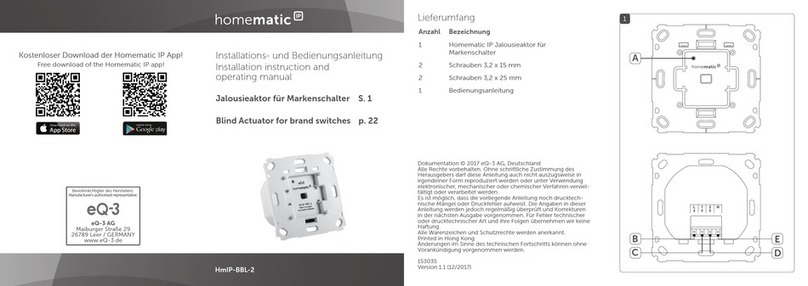
Homematic IP
Homematic IP HmIP-BBL-2 Installation instructions and operating manual

Bason
Bason T86-(RGB) i06 user manual
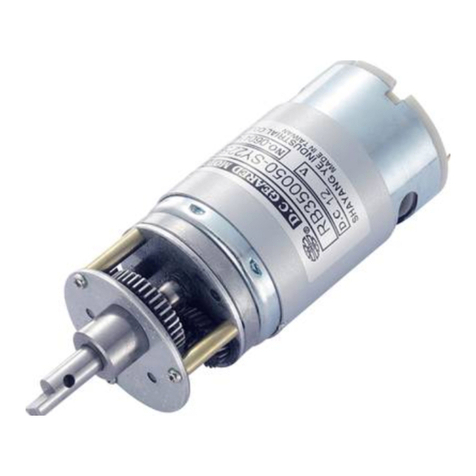
ModelCraft
ModelCraft 23 72 32 operating instructions

ABB
ABB RHDE8000 operating instructions
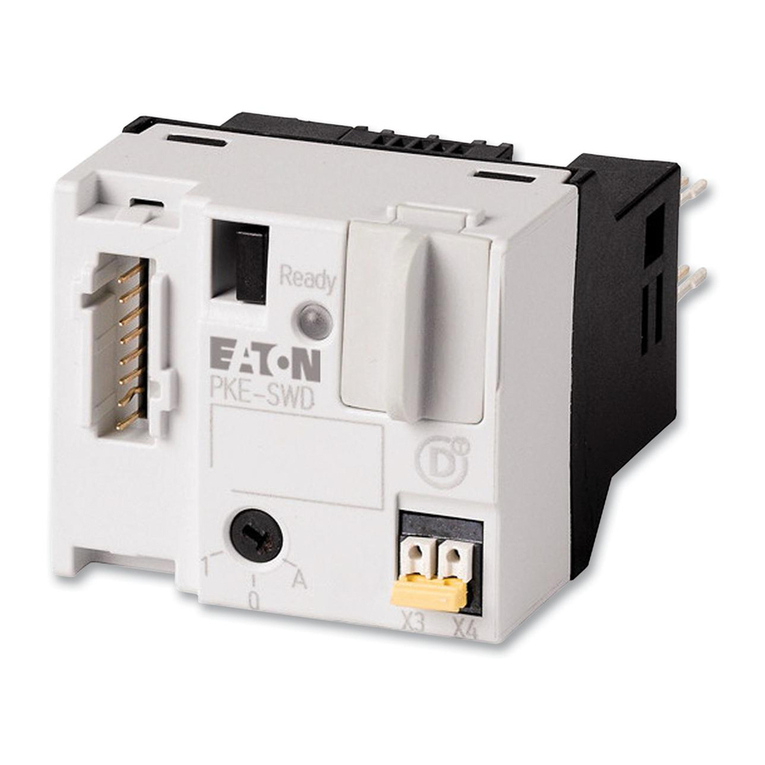
Eaton
Eaton PKE-SWD-32 installation instructions
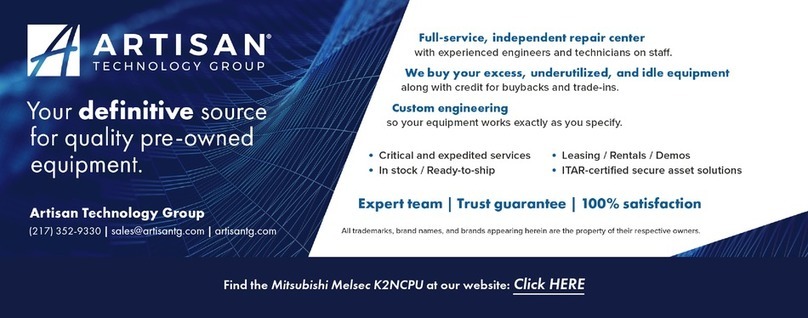
Mitsubishi
Mitsubishi MELSEC-K instruction manual
